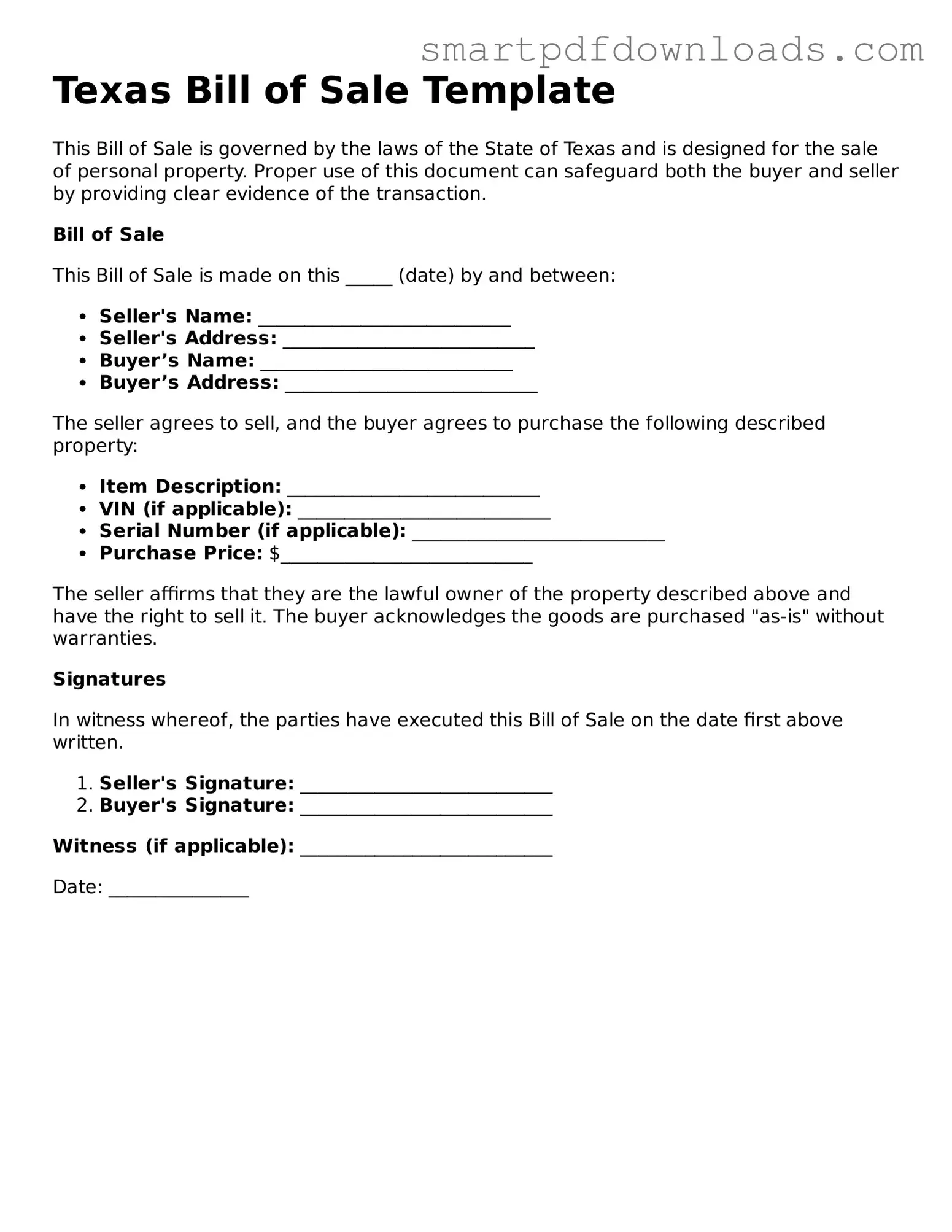Texas Bill of Sale Template
This Bill of Sale is governed by the laws of the State of Texas and is designed for the sale of personal property. Proper use of this document can safeguard both the buyer and seller by providing clear evidence of the transaction.
Bill of Sale
This Bill of Sale is made on this _____ (date) by and between:
- Seller's Name: ___________________________
- Seller's Address: ___________________________
- Buyer’s Name: ___________________________
- Buyer’s Address: ___________________________
The seller agrees to sell, and the buyer agrees to purchase the following described property:
- Item Description: ___________________________
- VIN (if applicable): ___________________________
- Serial Number (if applicable): ___________________________
- Purchase Price: $___________________________
The seller affirms that they are the lawful owner of the property described above and have the right to sell it. The buyer acknowledges the goods are purchased "as-is" without warranties.
Signatures
In witness whereof, the parties have executed this Bill of Sale on the date first above written.
- Seller's Signature: ___________________________
- Buyer's Signature: ___________________________
Witness (if applicable): ___________________________
Date: _______________
